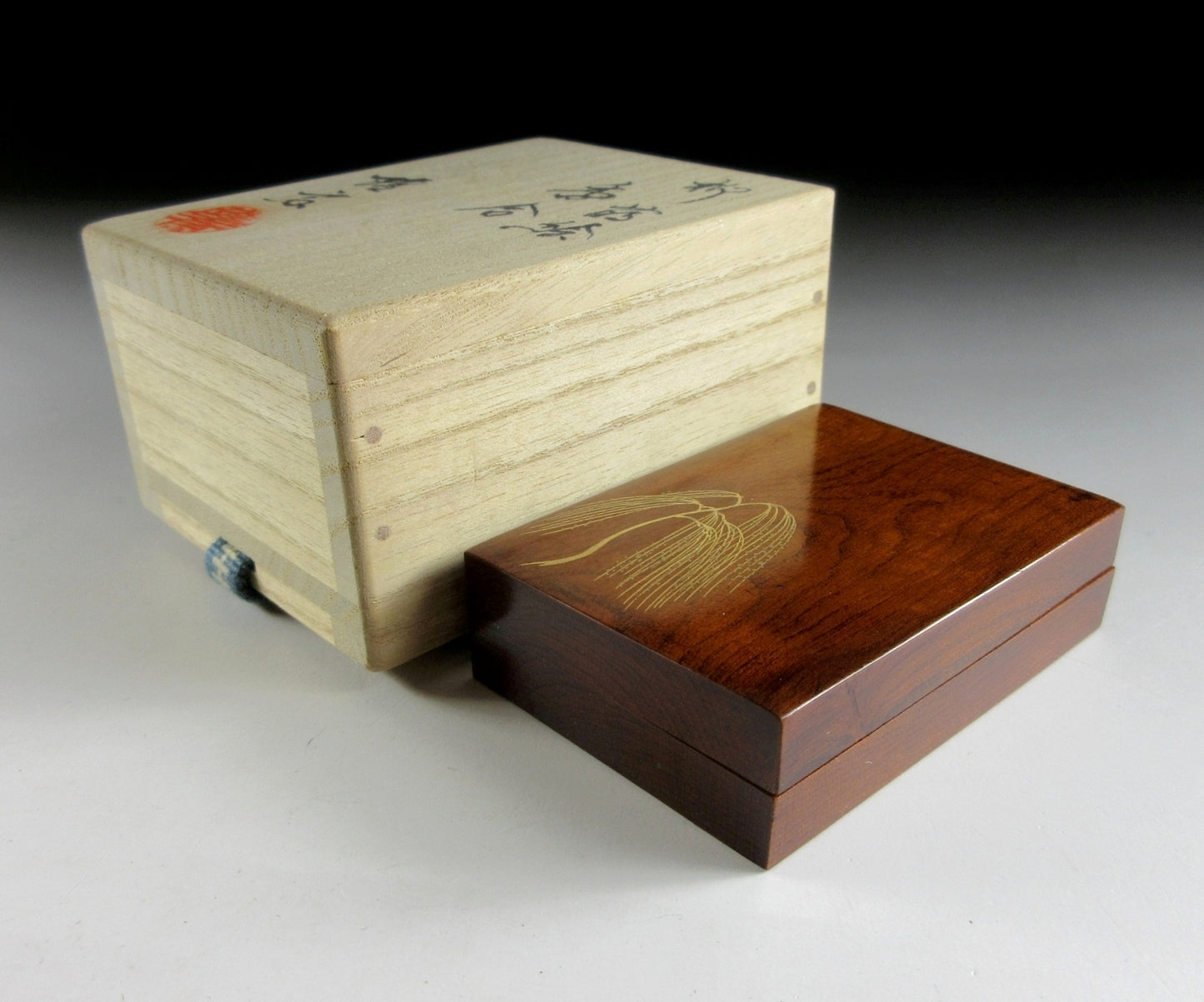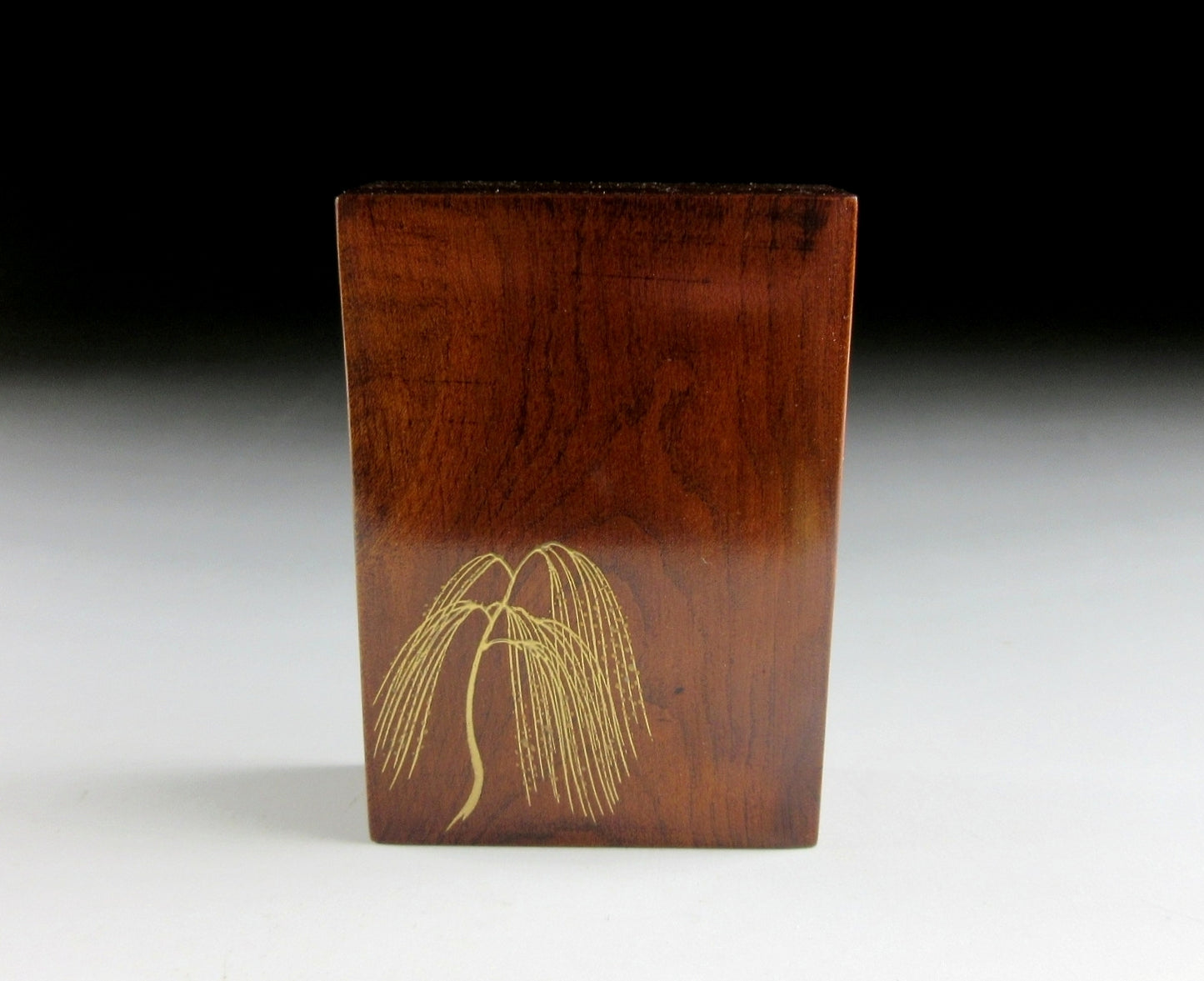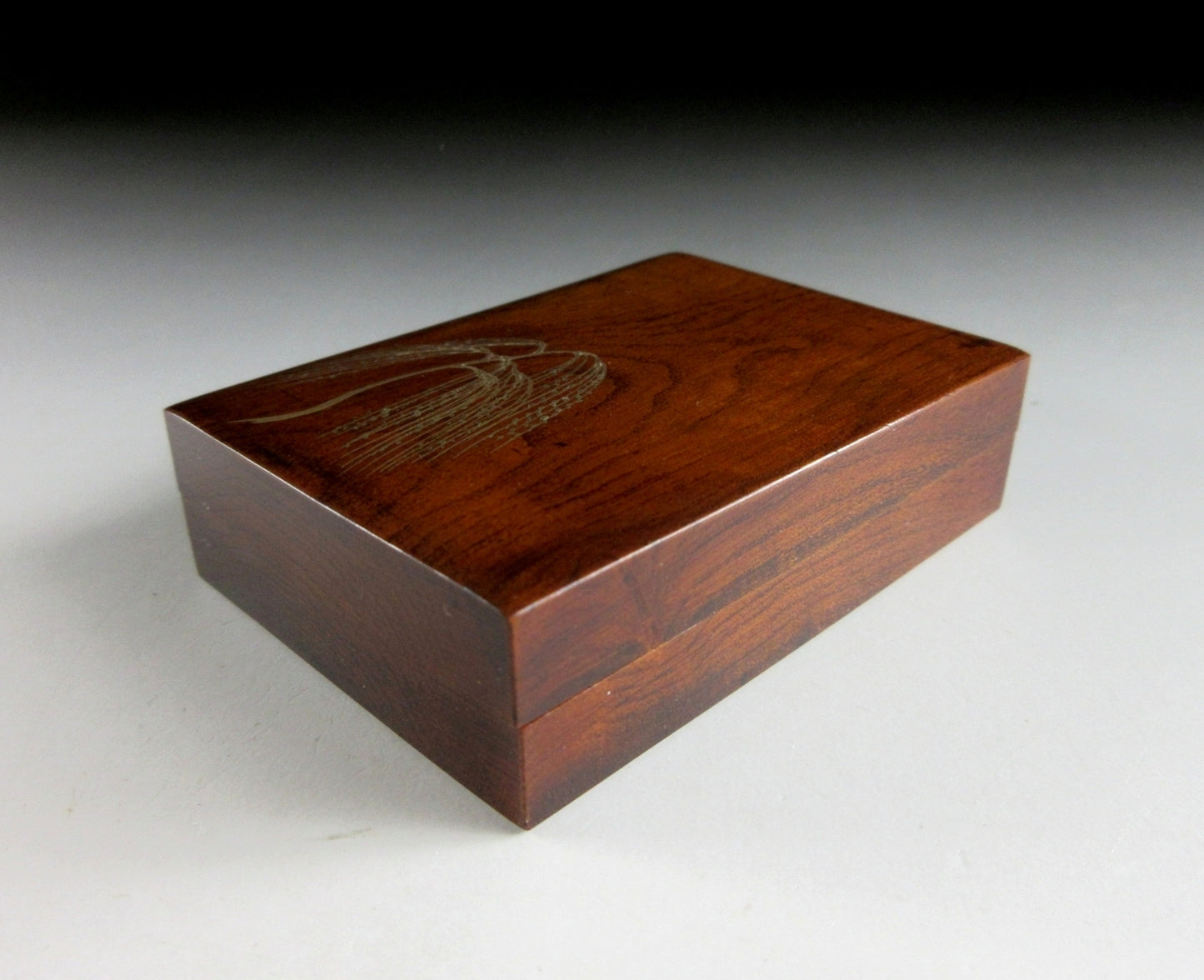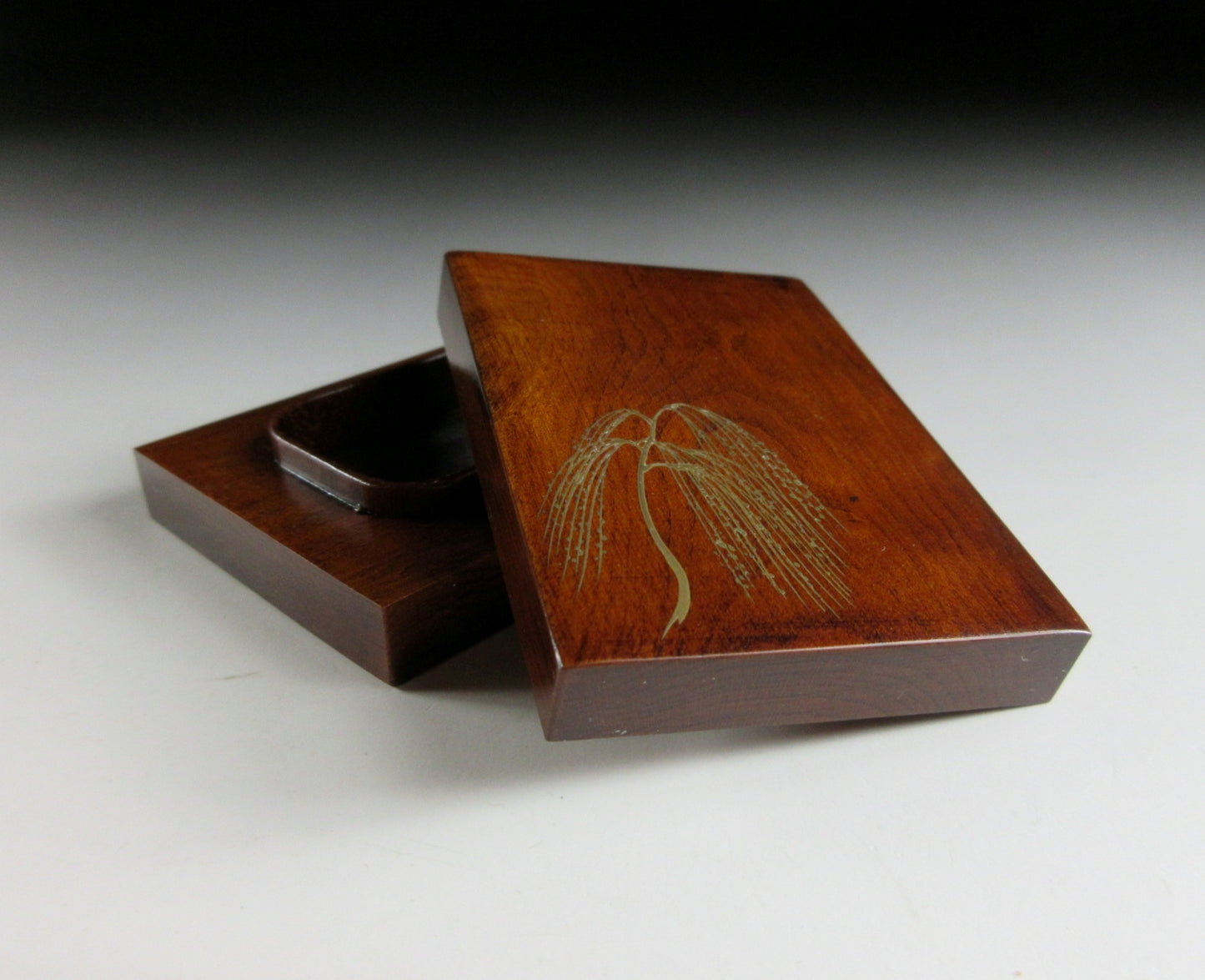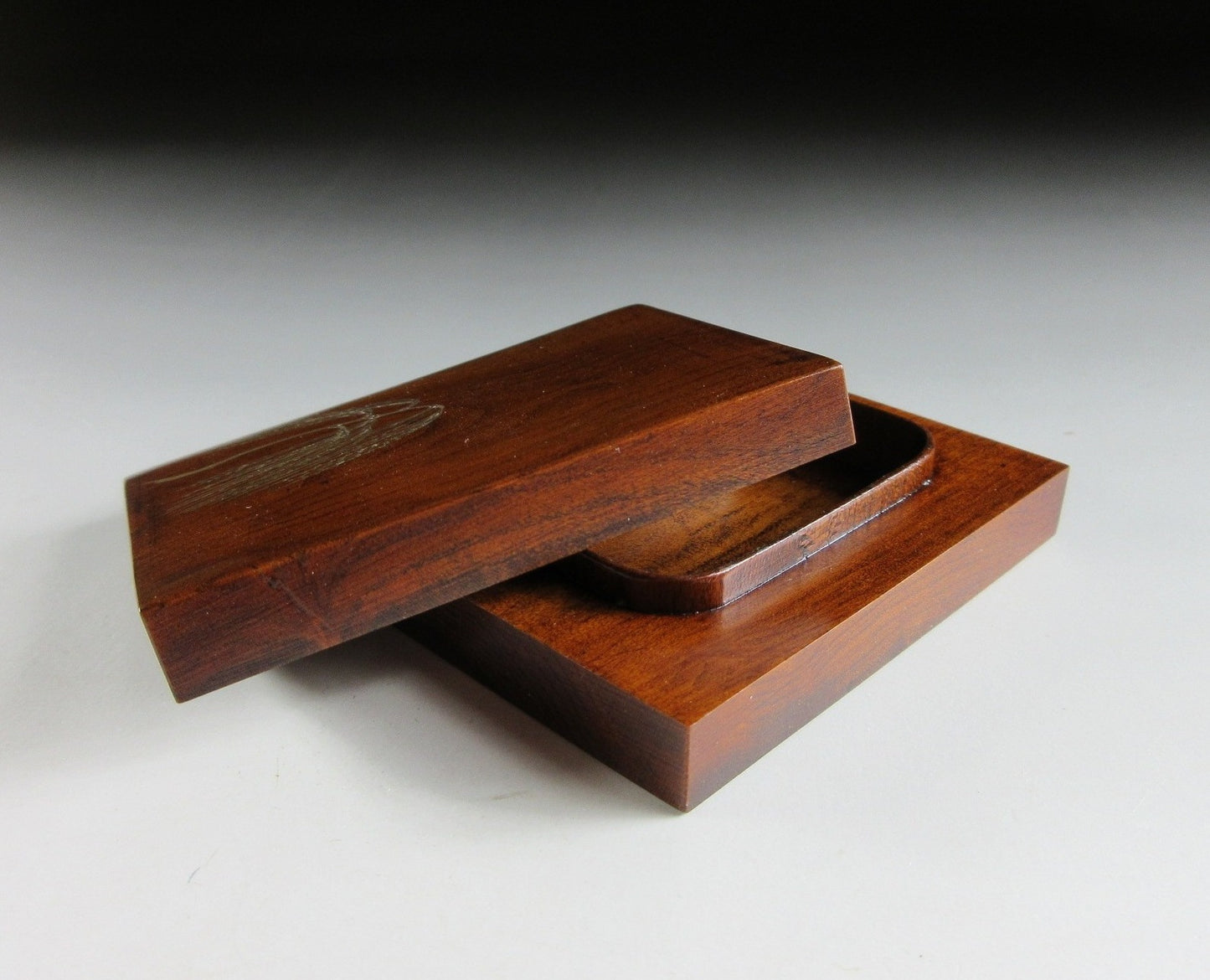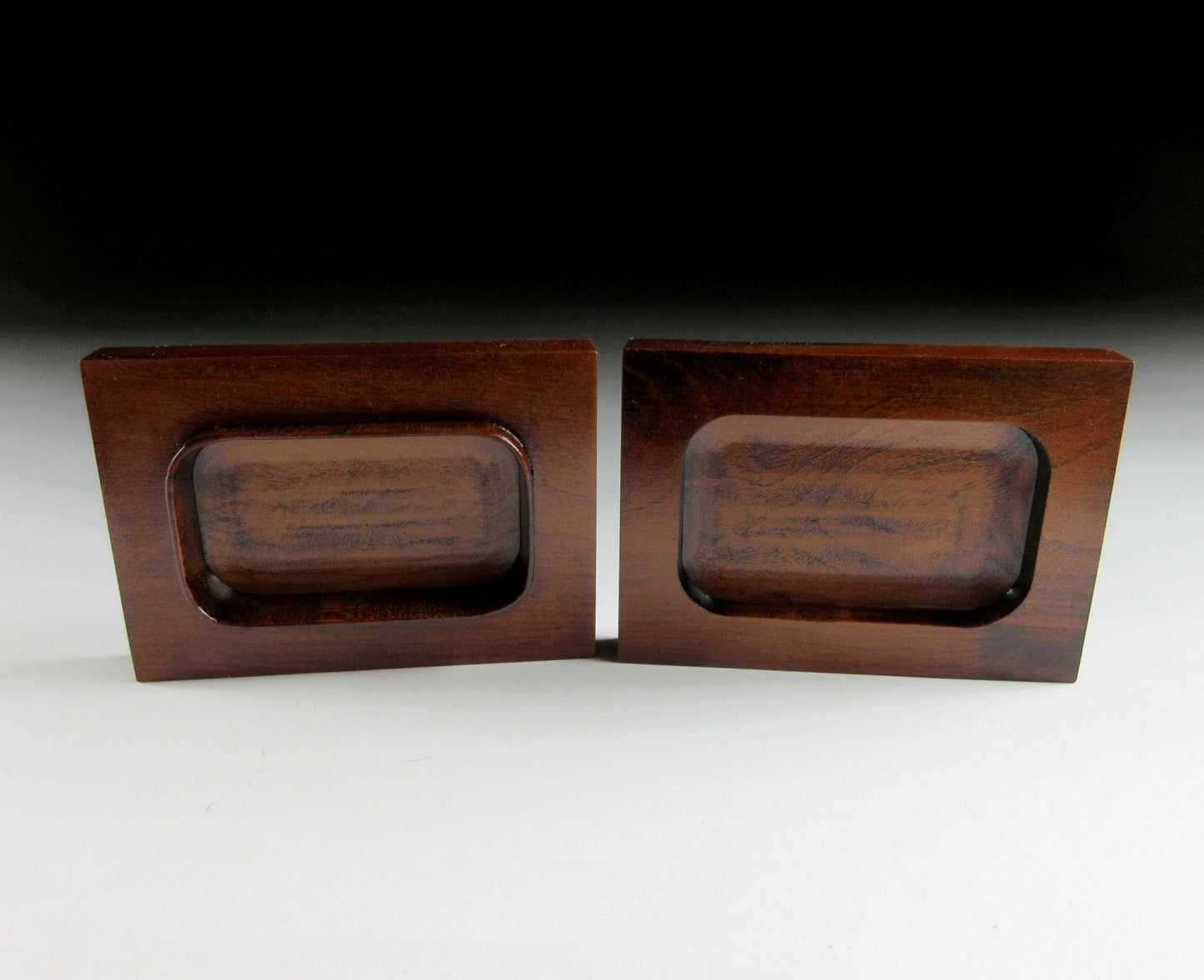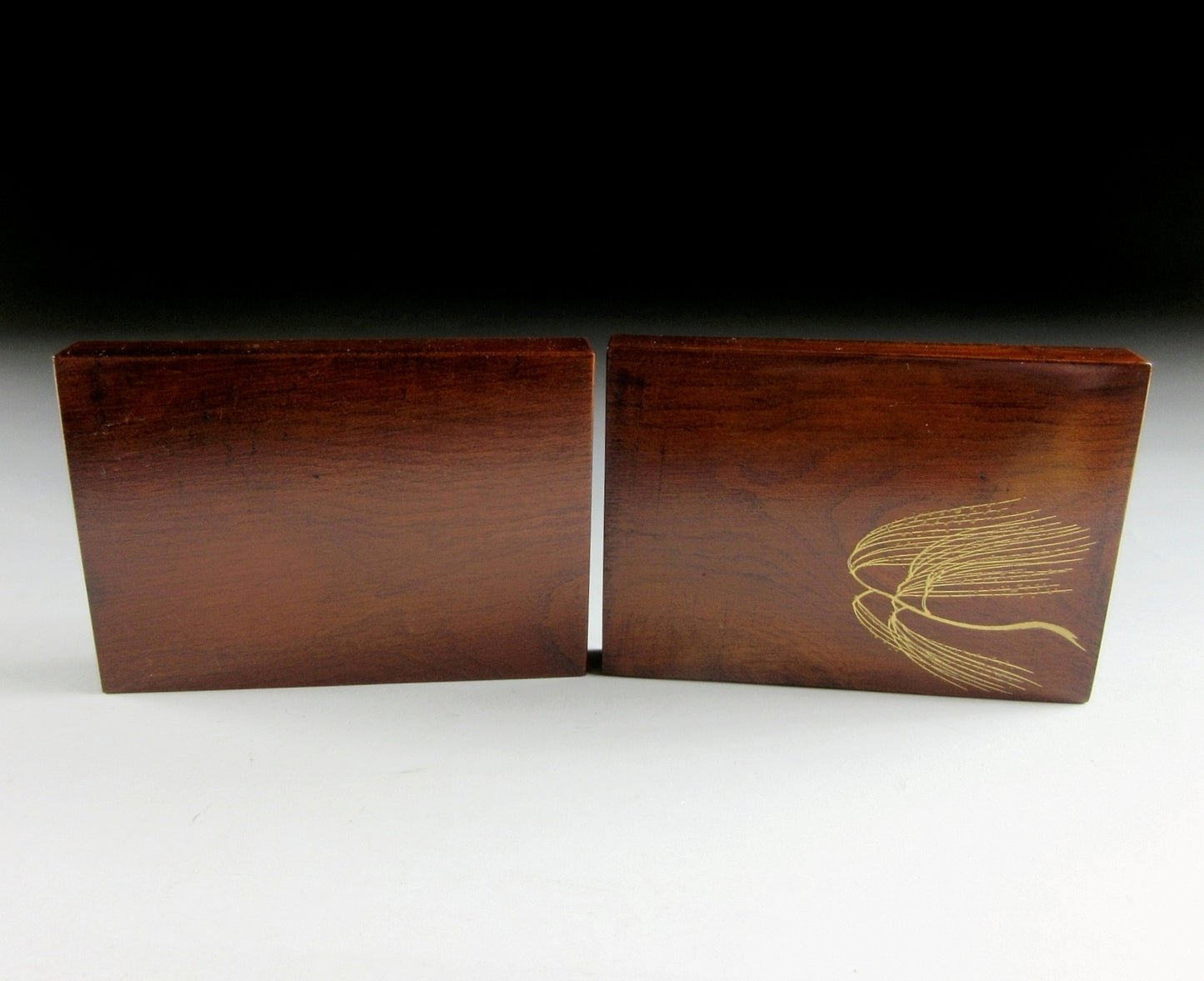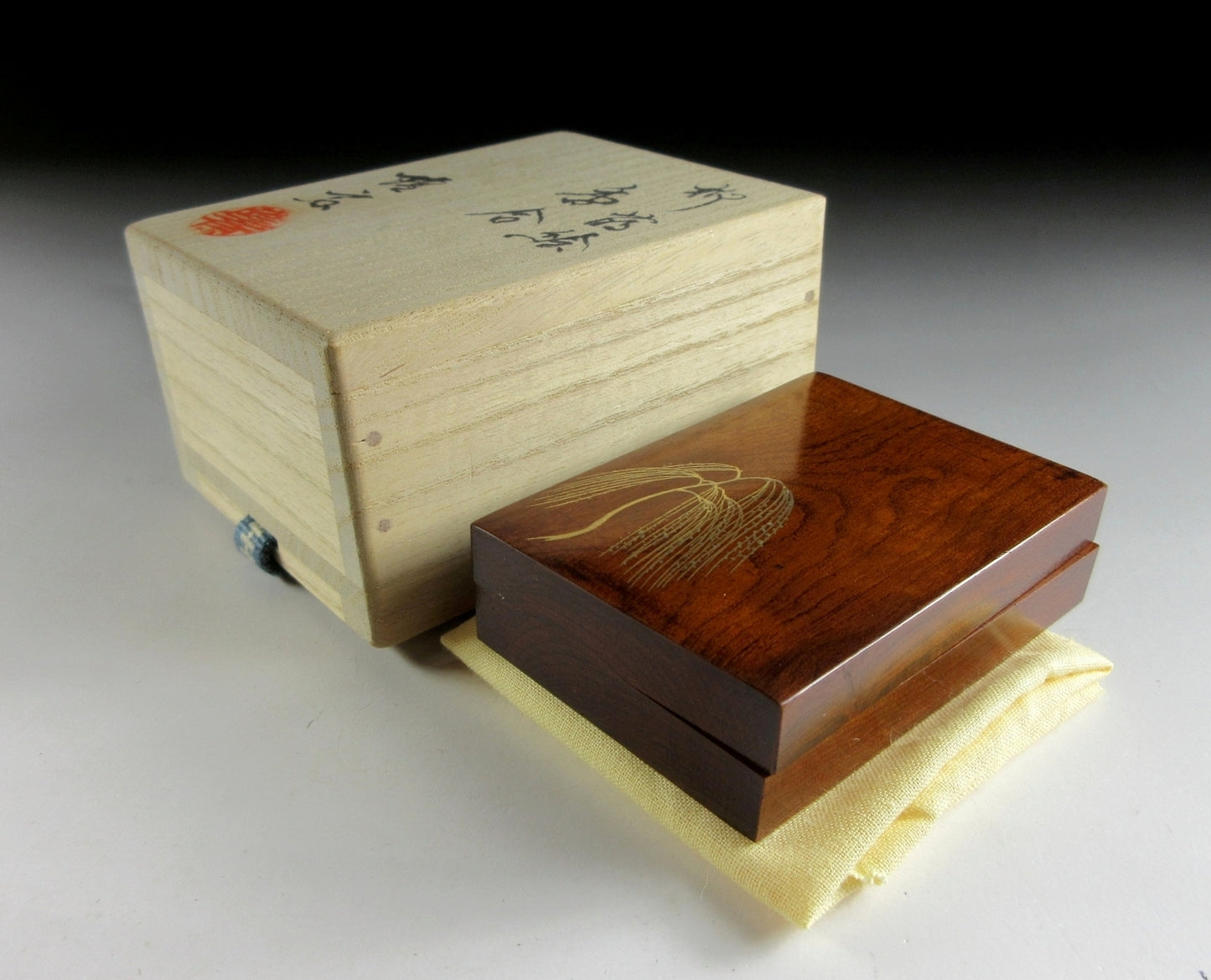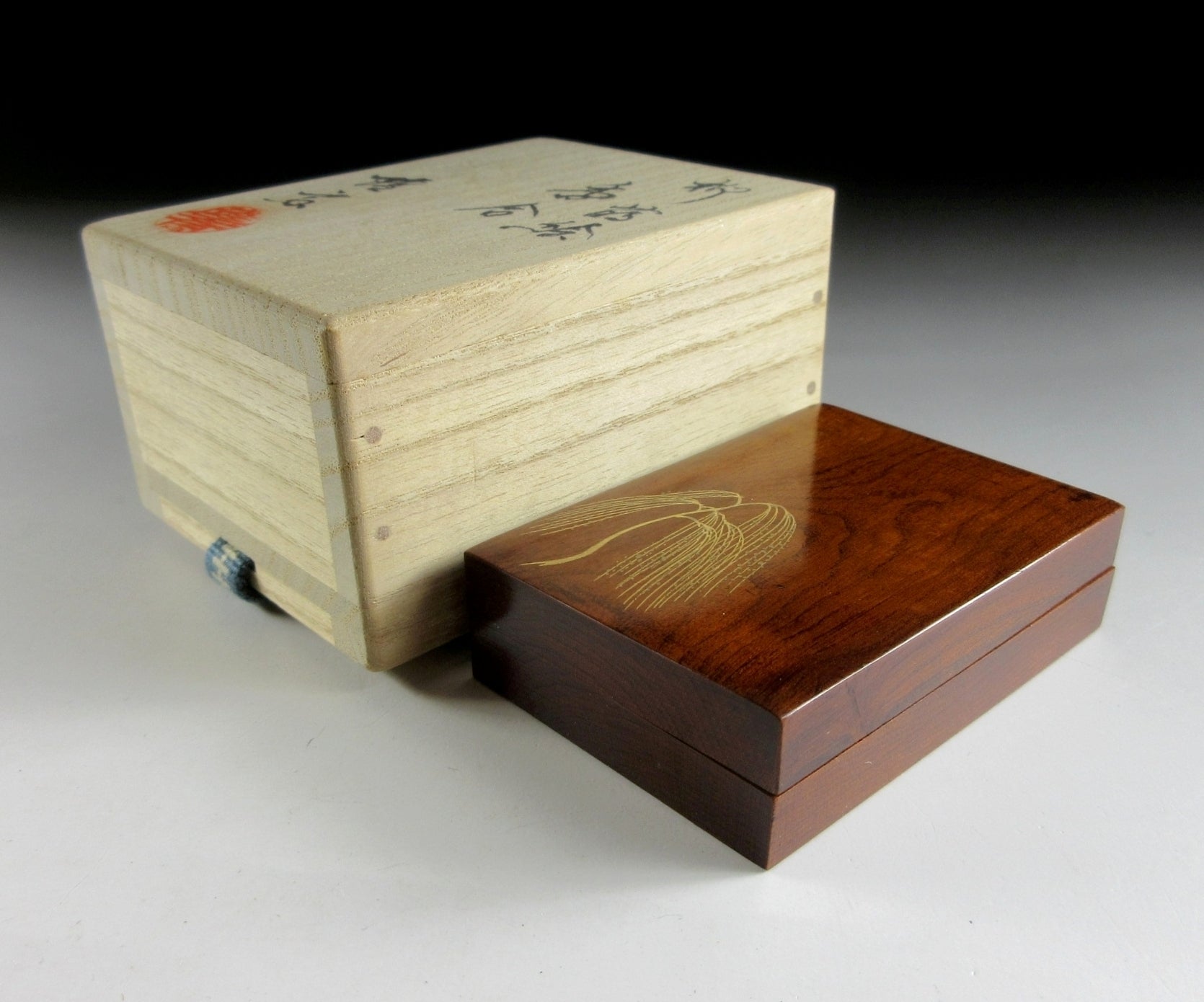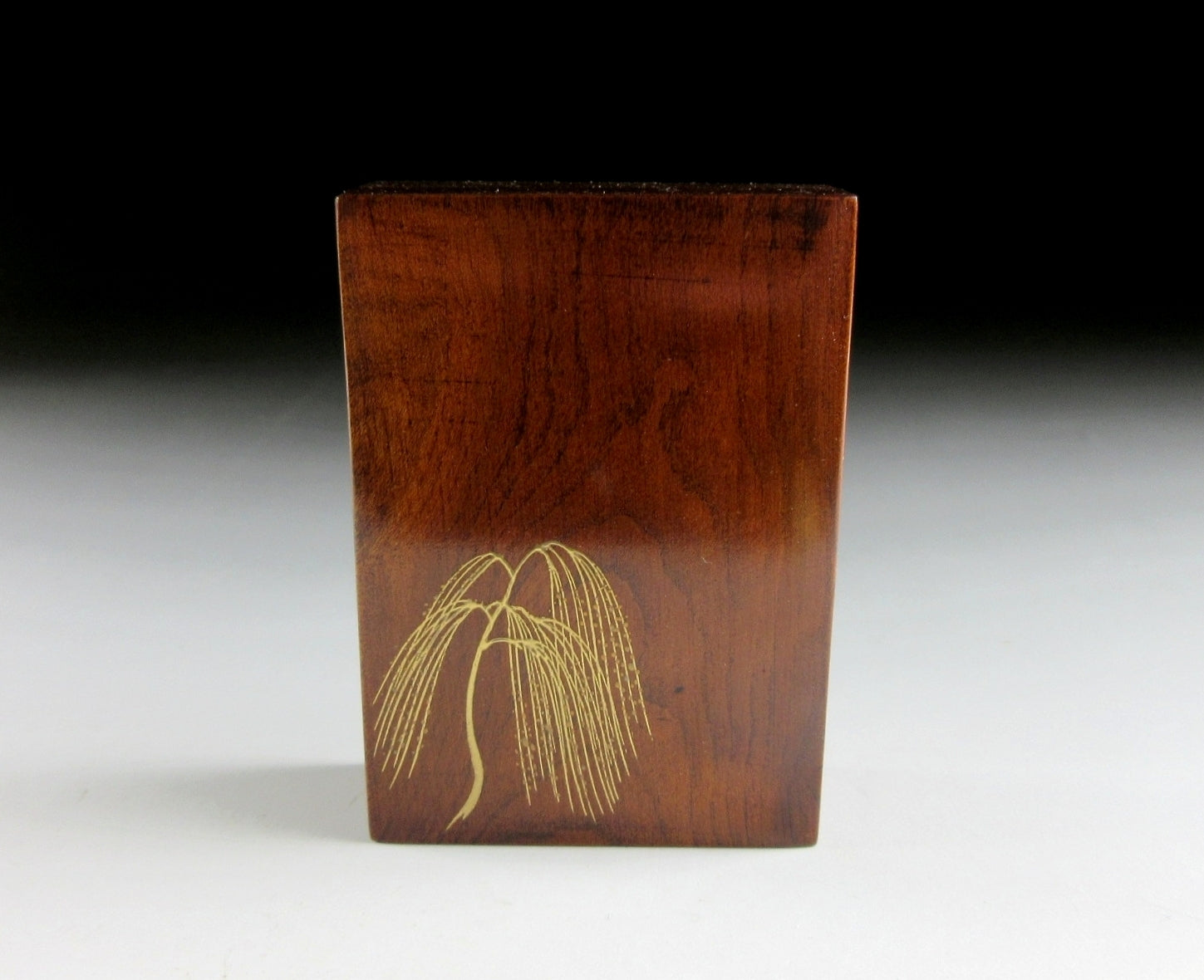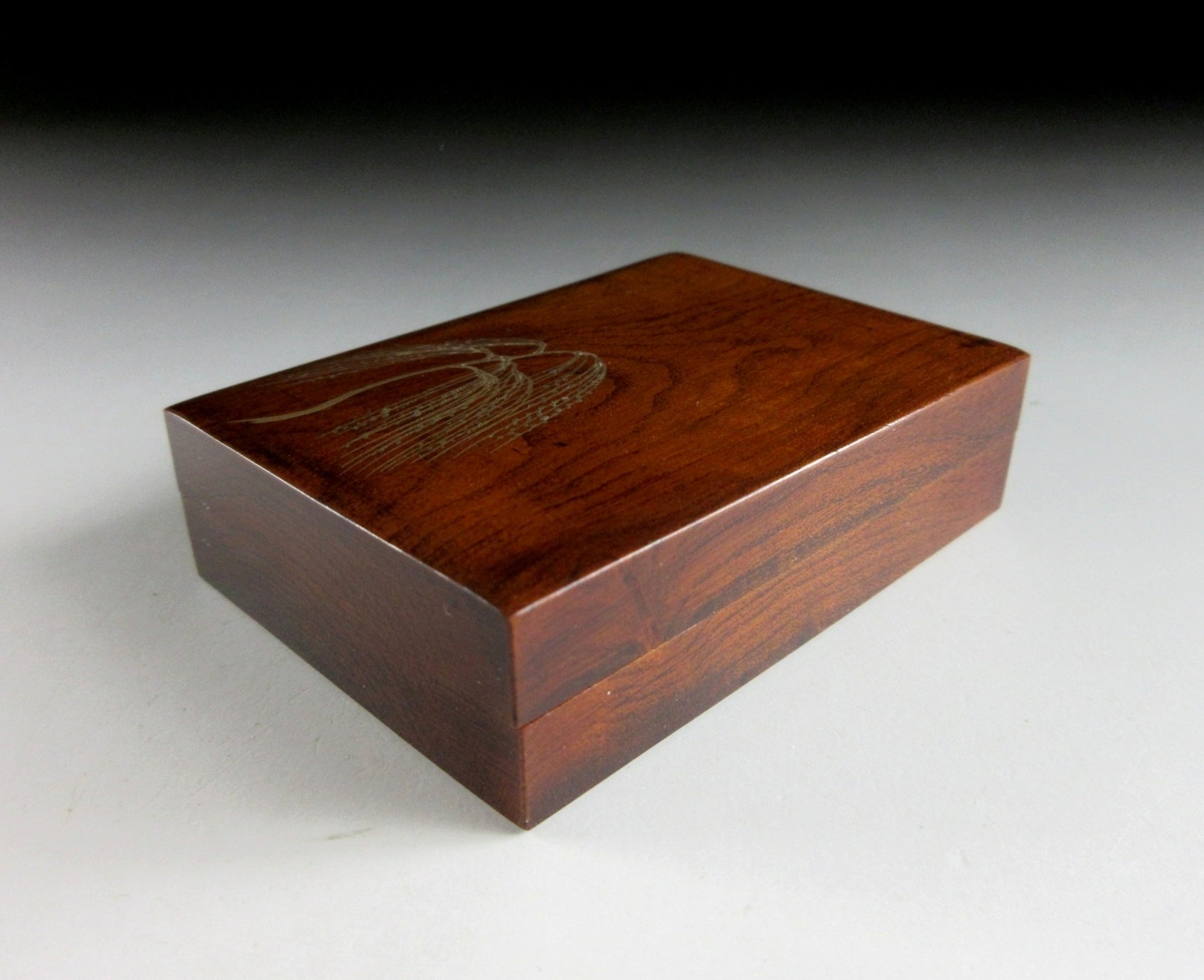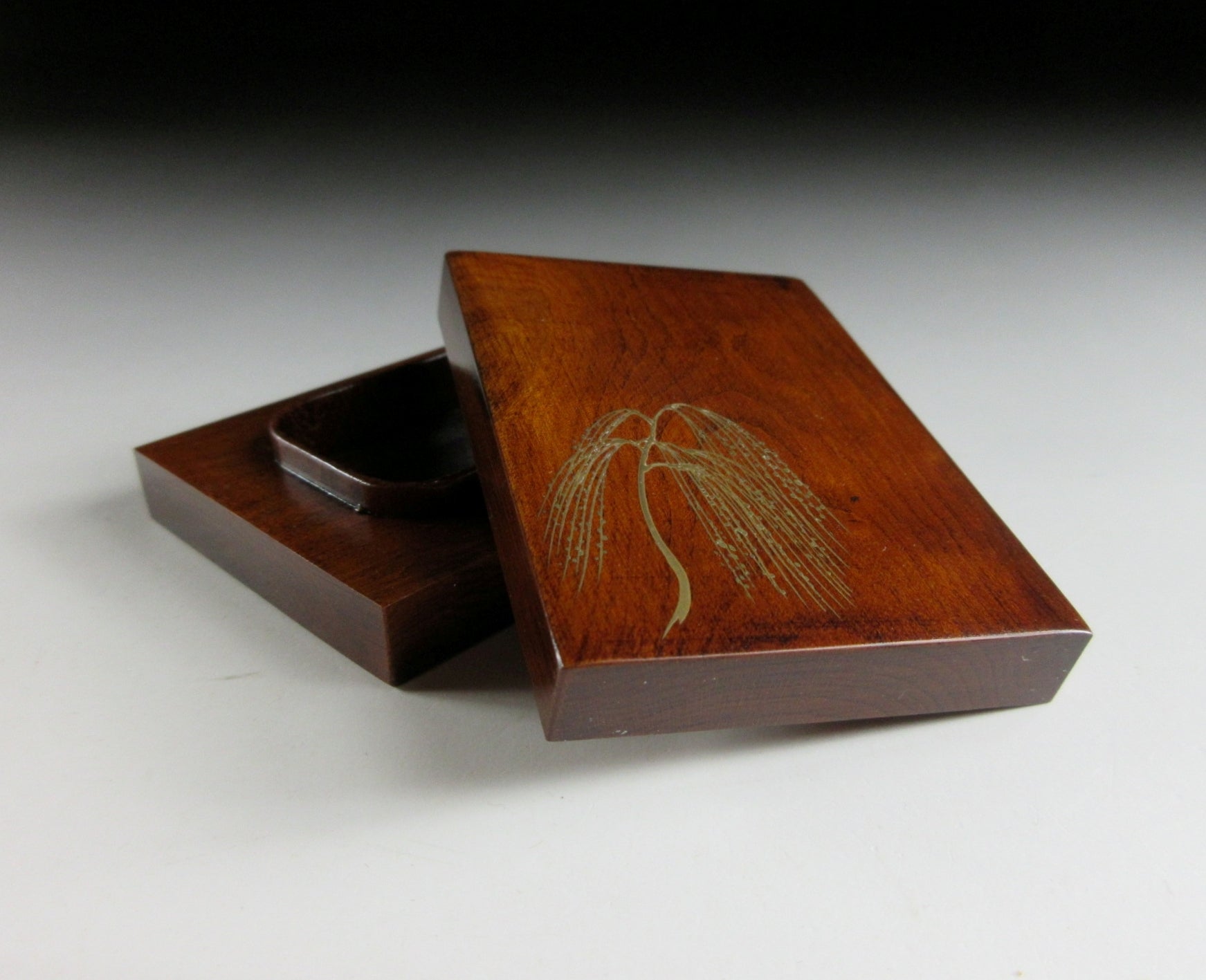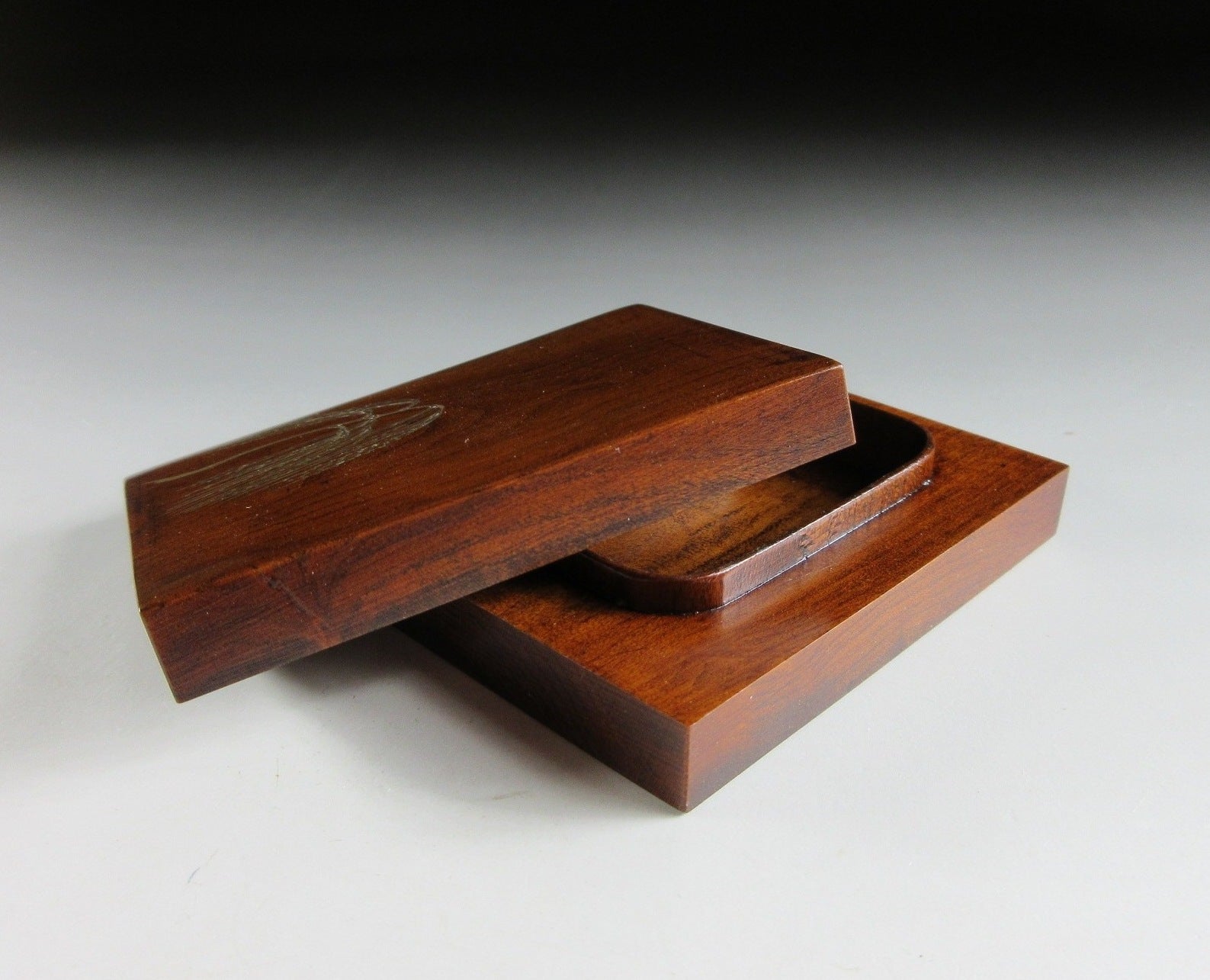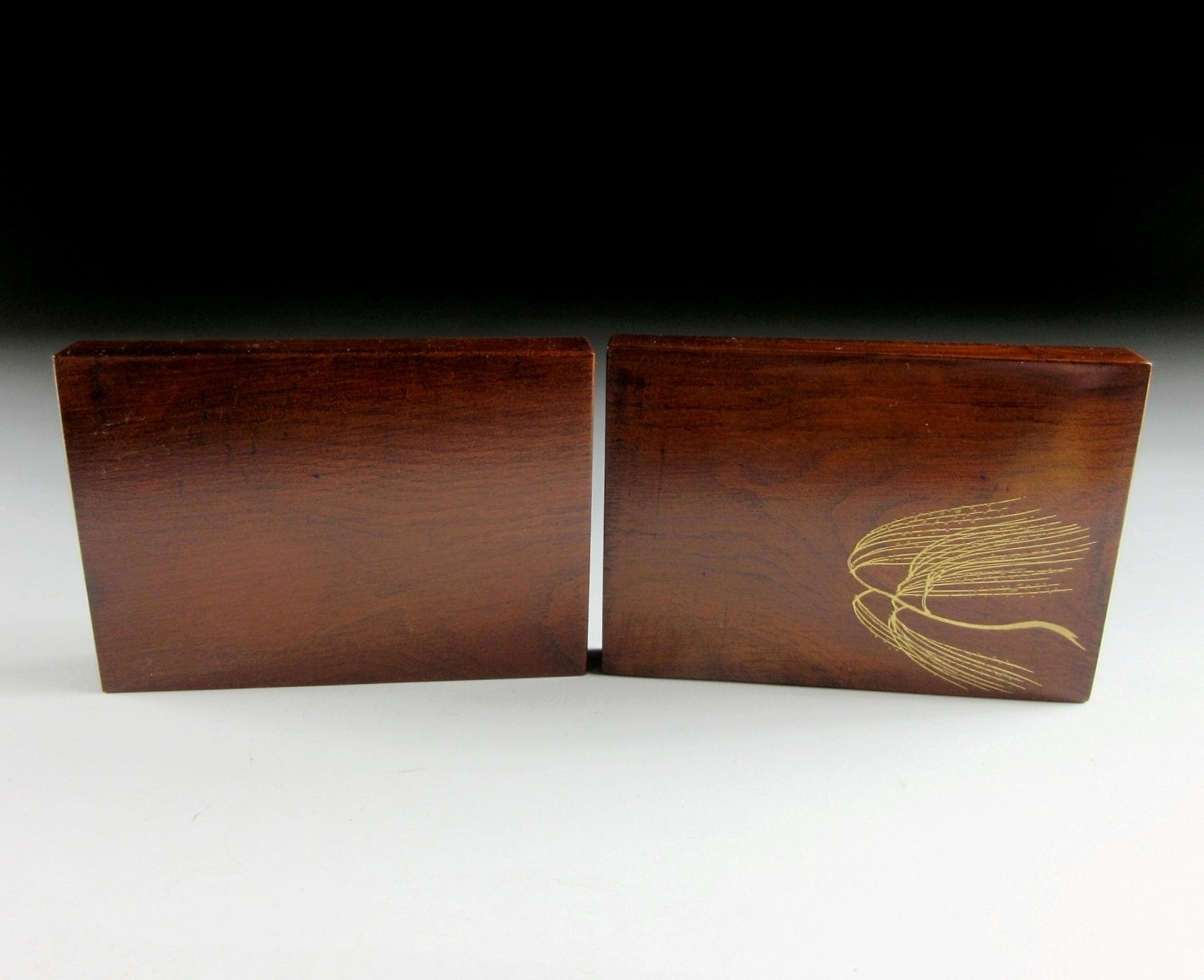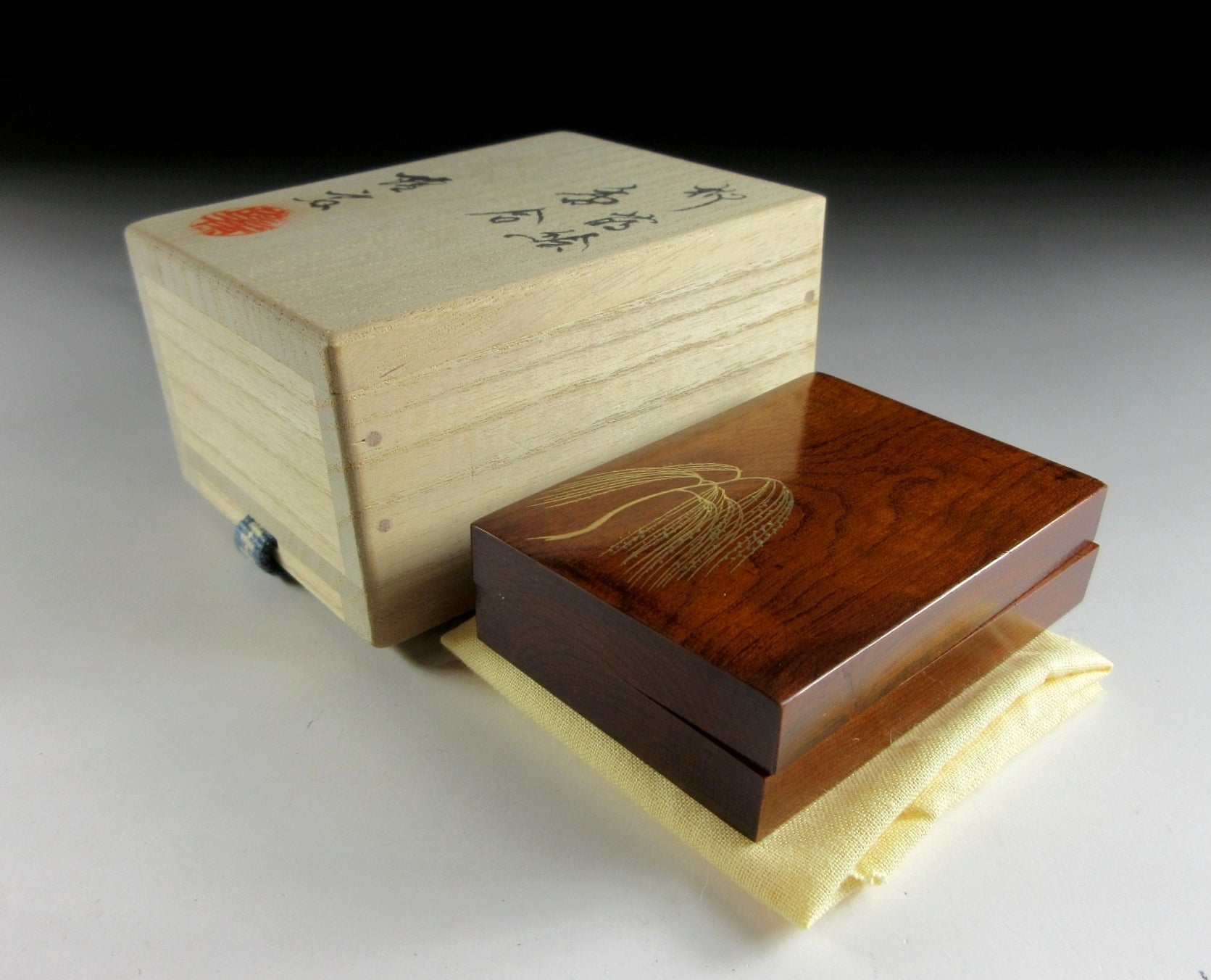Kominka Zakka
Iwakura Ryusai Yamanaka Willow Kogo
Iwakura Ryusai Yamanaka Willow Kogo
Couldn't load pickup availability
*SHIPPING OPTIONS VARY DEPENDING ON THE DESTINATION, PLEASE SCROLL TO THE END OF THIS LISTING FOR MORE DETAILS.
This listing is for a makie kogo made around 20 years ago by lacquerware artisan, Iwakura Ryusai. It is made of wood and the lid is decorated with a makie depiction of weeping willow. Weeping willow, or yanagi in Japanese, is often seen gently swaying in the summer breeze along rivers in streams in places like Kyoto. It is also admired for its strength as its branches do not break under the weight of snow. This piece is for holding woodchip incense and is ideally suited for use during the summer months. It comes with its original signed wooden storage box, as well as a yellow wrapping cloth for when the item is not in use.
Iwakura Ryusai (b.1926) is a Yamanaka lacquerware artisan born in the Yamanaka lacquerware district in Ishikawa Prefecture. In 1950 he began working under the name Iwakura Ryukoho, and in 1986 he changed his name to Ryusai to commemorate his 60th birthday as a Yamanaka lacquerware artist. In 1983 his work was selected for the Kansai Special Exhibition at the Kyoto City Traditional Industry Festival, and he has exhibited at various exhibitions in and around Ishikawa Prefecture. Iwakura is a highly popular and respected lacquerware artist, his tea utensils command high prices and are generally snapped up quickly. His son, Iwakura Fumiyuki, is now the second generation master of the Iwakura lacquer workshop. **Fellow sellers, this information was researched by Kominka Zakka and CANNOT be used in your own listings.
Yamanaka nuri refers to lacquerware produced in Ishikawa Prefecture. Echizen craftsmen from Fukui began producing lacquer pieces in this area as far back as the late 1500s. In the 1700s focus shifted towards producing wares for visitors to Yamanaka onsen. This also helped to promote the hot springs, so demand for lacquerware also increased. New techniques for lacquering were developed in the 1800s, and the arrival of the makie technique from Aizu, Kyoto and Kanazawa brought new changes to production in the area. Local craftsmen were also introduced to using a hand turned wood lathe to decorate the surface of their wares. Various patterns were developed and this became the most distinctive characteristic of Yamanaka lacquerware. The area flourished and it became known for its tea ceremony utensils and other fine lacquerware. Today there are over thirty lacquerware studios in the area, including Living National Treasure Kawakita Ryozo. **Fellow sellers, this information was researched by Koedo and CANNOT be used in your own listings.
Makie refers to a crafting technique in Japan from presumably the Nara period. Craftsmen sprinkle gold or silver metal powder over successive layers of lacquer before it dries. Traditionally pure gold powder, pure gold flakes, and pure silver powder were used to complete motifs on lacquerware. The process of applying gold or silver powder requires both time and skill. At first the craftsman sketches out the design. He or she then adds charcoal powder to the base of the relief, and then a layer of urushi lacquer. Gold or silver powder is sprinkled over the wet lacquer, which acts as an adhesive. The surface is polished and then the process is repeated over and over until a beautiful raised pattern appears.
Kogo are for holding incense during the tea ceremony. Kogo vary depending on the season. In summer wooden kogo are used for holding chips of incense wood, and in winter ceramic kogo are used for holding kneaded incense intended for the hearth. During the tea ceremony, incense is added to the charcoal fire during the charcoal-laying procedure.
Sizes
Box: H.4.7cm (1.8”) x 8.8cm (3.4”) x 6.7cm (2.6”)
Kogo: H.1.9cm (0.7”) x L.7cm (2.7”) x W.5cm (1.9”)
Condition
It’s in very good condition with little to no wear.
THESE ARE SHIPPING ESTIMATES BASED ON THE CURRENT GLOBAL SITUATION
**Germany, France, Greece, Spain, Poland, Austria, Slovakia, Lithuania, Slovenia: NO SHIPPING. Very strict and expensive packaging laws in place and we are not licensed to send products to these countries. We have no plan to register at this time because the process is in some cases very expensive and complicated, plus each country has its own set of regulations and application process.
**USA: EMS Express (approx. 7-15 days). Combined shipping available (please send us a message) but please note that the price does not get cheaper for Airmail or EMS, in fact it becomes more expensive. If you want to save money and don't mind a very long 3 month wait, request sea mail (11-12 weeks depending on processing and backlogs at destination ports). Inexpensive Airmail Small Packet option unavailable.
**UK and Canada: EMS Express (approx. 7-15 days). Combined shipping available (please send us a message) but please note that the price does not get cheaper for EMS, in fact it becomes more expensive. If you want to save money and don't mind a very long 3 month wait, request sea mail (11-12 weeks depending on processing and backlogs at destination ports). Inexpensive Airmail Small Packet and regular Airmail is currently unavailable.
**Australia, New Zealand, Switzerland, Norway: Airmail ePacket (approx. 15-28 days). Combined shipping available up to 2kgs for Airmail ePacket (please send us a message).
**Asia: Airmail ePacket (approx. 15-21 days). Combined shipping available up to 2kgs for Airmail ePacket (please send us a message).
**Russia: No shipping methods available.
Share
